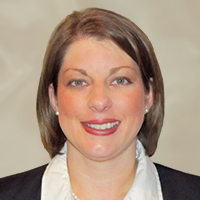Benefits Corner
Benefits Corner this month features stories on the coming Nov. 8 end of Saia's annual online open enrollment to elect benefits coverage for 2020. Also featured are articles on Breast Cancer Awareness Month, employee dental coverage and the online accessing of the medical Summary Plan Description (SPD).
Open Enrollment 2019
Saia’s annual online open enrollment ends this coming Nov. 8! The open enrollment period allows benefit-eligible employees to elect benefits coverage for 2020. Remember, all full-time employees desiring benefits must enroll even if they have previously enrolled either as a newly hired employee in 2019 or during past open enrollment periods.
October is Breast Cancer Awareness Month

How Breast Cancer Is Diagnosed
Breast cancer is often found during a screening mammogram or breast exam, but sometimes a woman notices and reports a change in her breast. If you have a suspicious lump or an abnormal screening result, your doctor can order one or more of several tests.
Imaging tests are usually the first step. One or more of these tests may be done:
- Diagnostic Mammography - A mammogram is basically an x-ray of the breast. For screening mammograms, two pictures are taken of each breast. When mammography is used for diagnosis, pictures are taken from different angles, focusing on the area where an abnormality was found. If any questions remain, an ultrasound or MRI may be done next.
- Breast Ultrasound - An ultrasound uses sound waves to create images of the breast tissue that can be viewed on a screen. An ultrasound can show if a lump is solid or fluid-filled, like a cyst. Cysts are rarely cancer.
- MRI - Magnetic resonance imaging, or MRI, uses radio waves and magnets to create hundreds of detailed images of the breast tissue. It can sometimes help a doctor find a breast lump that can be felt but can't be seen with mammography or ultrasound.
If your doctor still has any concerns, you will need to have a biopsy. For this procedure, a doctor removes a sample of the suspicious breast tissue so it can be checked for cancer cells. A biopsy is the only sure way to know if a breast lump is cancer.
It's normal to be worried if you have been told you need a biopsy. But, it's important to remember that four out of five women who get breast biopsies do not have cancer. Many other conditions can cause suspicious lumps, and a biopsy can help identify those.
There are different types of biopsies. Your doctor will decide which type is best based on the nature and location of the lump and your overall health.
Biopsy methods include:
- Fine Needle Aspiration - The doctor uses a very thin needle to remove either fluid from a cyst or tissue from a solid mass. Ultrasound may be used to help the doctor see where to place the needle. If the results are not clear, another type of biopsy will be done.
- Core Needle Biopsy - The doctor uses a slightly larger needle to remove a few core samples of the abnormal tissue.
- Stereotactic Core Needle Biopsy - For this procedure, your breast is compressed (similar to a mammogram), and x-rays and a computer are used to spot the exact locations to insert the needle.
- Surgical Biopsy - This is surgery to remove the tissue for biopsy. In an incisional biopsy, the surgeon takes part of the abnormal tissue. In an excisional biopsy, the entire suspicious area is removed as well as a small margin of normal tissue. This procedure is usually done in the outpatient section of a hospital. Local anesthesia is used to numb the breast. You may also be given a medication to help you relax and make you drowsy.
After the biopsy is done, the sample is sent to a pathologist. This doctor will examine the tissue or fluid under a microscope to look for abnormal cell shapes and growth patterns. The pathologist will send a report of the findings to your doctor.
If cancer is found, the report will include the type of cancer and how aggressive it is. Your doctor will use this information to suggest the best treatments.
For more tips and resources please contact United Health Care’s nurse line at 1-800-504-5569 or visit www.myuhc.com.
Dental Coverage

Preventive oral care not only provides benefits to your overall health, it also helps avoid unexpected expenses like oral surgery. MetLife has a vast network and flexible coverage options available to their members. Provided that you elected coverage, you are eligible to receive two dental cleanings paid at 100 percent per calendar year.
For a copy of your dental card, please visit the Employee Information Center (EIC) or the forms library found on our enrollment site.
Summary Plan Description

The medical Summary Plan Description (SPD) is available online through the Employee Information Center or by contacting the Benefits Department at 1-800-950-7242, Ext. 2121 or 2564 or e-mail empben@saia.com.




